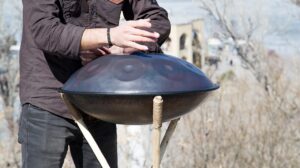These days, there are a number of ways of creating an exciting and developmentally appropriate play area for children. Anyone with children knows that they love to climb. But it doesn’t have to be an indoor climbing structure. A Pikler triangle by Emmi Pikler is all you need.
A Pikler climbing triangle is a wise and practical purchase
This wooden toy has educational value. It was made famous by the Hungarian paediatrician Emilie, also known as “Emmi” Pikler. Emmi Pikler not only studied medicine, but also movement development. She lived from 1902 to 1984 and, at that time, it was not easy to approach children according to their needs. However, Pikler recognised that it was already possible to communicate with babies. This allows you to put yourself within their reach and actively involve them from the outset. She said that children don’t grow faster if we pull on them, just as a blade of grass doesn’t grow faster if we pull on it.
The Pikler triangle is characterised above all by its shape. Thanks to the Pikler triangle, even the smallest children can develop their motor skills and make discoveries through play.
By the way, what is a Pikler triangle?
The Pikler triangle is, as its name suggests, a wooden triangle. It has rungs for children to climb on.
The rungs are just the right thickness to provide stability. What’s more, children’s hands can easily grab hold of them. It’s the only way for little ones to have a secure foothold.
The sides of the rungs are angled to form a triangle. This allows children to climb in a healthy position. This prevents climbing beginners from developing bad posture. Children can challenge and rediscover their motor skills.
Variants and versions of the Pikler climbing triangle
The classic Pikler triangle is now available in a range of sizes to suit all ages. Buyers are impressed by the stable construction of this special motor learning toy. It doesn’t come in just one size, but is available with different accessories, such as a sliding board, depending on the age of the child.
Most climbing triangles are made from high-quality wood. What’s more, the angle of inclination is optimal, so that children are in a healthy position when climbing. Some models are even adjustable in angle.
Special Pikler triangles
MAMOI Pikler Triangle v. 2 for children modern indoor climbing structure for children minimalist design / durable climbing triangle for young children made of wood 100% ECO Made in EU
This Indoor climbing tower is a set with slides and is made from high-quality plywood and pine, making it stable. There are no sharp edges, because the elements have been carefully sanded. The Pikler toys are held in place by sturdy knock-out screws. The set meets EN and CE standards and the most stringent safety requirements.
Who is a climbing triangle suitable for?
Every child should be able to climb, and the Pikler triangle helps them to do so. A climbing triangle is specially adapted and developed to meet the needs of children. It is stable and its height is perfectly adapted to children’s abilities.
There is no precise age at which the climbing triangle can be used, but for young children it is from around ten months. The general rule is that when young children can walk on all fours and climb to heights of at least ten centimetres, they are ready to use a climbing triangle. Even if children can already walk, it’s not too late to buy one, because the climbing triangle is always interesting.
The Pikler climbing triangle as a triangular support can also be used by young children from the age of ten months to help them stand up. From the age of two, many children can already climb to the top rung on their own.
The climbing triangle can continue to be used, as it can be flexibly extended.
For example, the triangle can be combined with a sliding board. This allows the child to take on completely new challenges, something that appeals to children up to the age of six. Children also like to throw a blanket over the triangle and use it as a grotto.
The Pikler triangle doesn’t take up much space, but it can still do lots of things.
How did the three pillars of early childhood education come about?
- The autonomous development of movement
(Healthy children have enough drive of their own to develop motor skills)
(This also involves trusting children to be able to carry out certain activities independently)
(The child can keep himself occupied satisfactorily)
These points provide an overview of what the Pikler Climbing Triangle has to do with the Pikler Pedagogy.
What does a climbing triangle offer?
Young children can use a climbing triangle from the age of ten months. Children can pull themselves up onto the rungs and walk along them. They can also learn to climb slowly using their own skills. All at their own pace. The climbing triangle offers only enough space for the child to have plenty of opportunities. The child is expected to use the triangle according to his or her current abilities. Sometimes children simply stand near the triangle and look around.
With the climbing triangle, children become very creative. Not only is it great for climbing, it’s also perfect for building a cave. With a blanket over it, the climbing triangle quickly becomes the perfect picnic spot. And if it’s no longer needed, it folds up in no time at all and can easily be put away.
Climbing triangles are available in a range of different versions, so that children can still enjoy them when they’re older. You can also buy a chicken ladder or a sliding board, which can simply be attached to a rung. This makes them ideal for long-term use.
The triangle does not require a particularly hard surface. The triangle can simply be placed on a play mat. This way, it doesn’t hurt too much if the children fall. It’s easier for little ones to fly backwards instead of sitting still.
Conclusion
To sum up, the climbing triangle can be used in a variety of ways, thanks to the range of accessories available. What’s more, it’s very robust. It can be used by infants from as young as ten months, helping to develop their motor skills. It also encourages free play.




